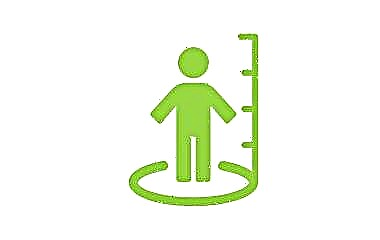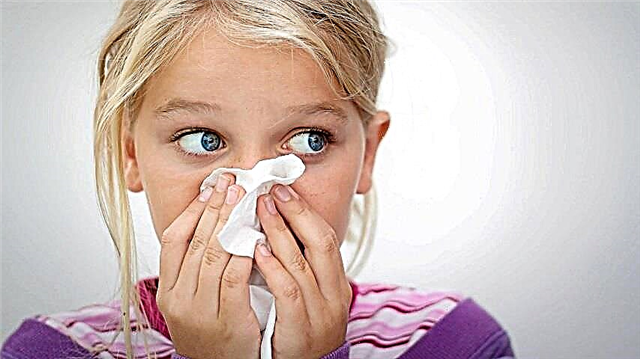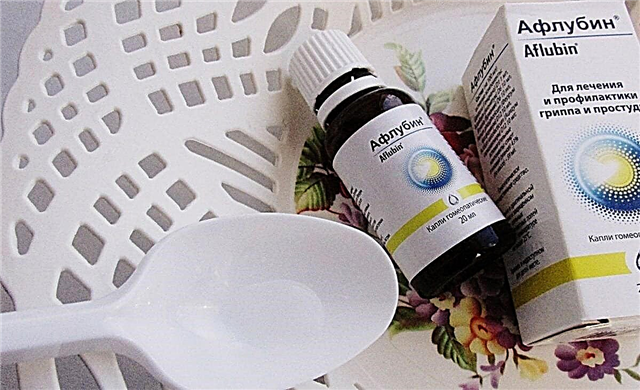
One not too beautiful morning, a pink-cheeked toddler appears before parents with an incomprehensible, and therefore frightening, rash on his face and body. The most popular versions of what happened in babies are allergies and prickly heat. All parents know about it. But sometimes it is very difficult to distinguish the first from the second.
We will tell you about the differences between an allergic rash and prickly heat in this article.

Differences in causes
The rash that appeared against the background of an allergic reaction and the rash as a result of prickly heat are indeed very similar. However, having weighed all the factors, parents may well establish the true causes of skin manifestations. And in allergies and prickly heat, they are significantly different.

An allergic rash is usually preceded by a certain event in 2-3 days, which became the "starting point" for the onset of an inadequate reaction of the child's immunity to a certain allergen. Such an event in the life of a baby can be:
- introduction of a new food product, complementary foods, changes in the diet of a nursing mother, change of an adapted milk formula;
- taking a drug by the baby;
- buying a new toy;
- change of cosmetics for skin care;
- change of means for washing children's clothes, cleaning floors in the children's room;
- being in the open sun (the so-called photoallergic reaction, allergy to UV rays);
- close contact of the child with pollen of plants (especially field grasses), animals, birds.
An allergic reaction in this case develops smoothly, that is the rash does not appear immediately, but only after 2-3 days after the first "acquaintance" of children's immunity with the protein antigen.
A quick allergic reaction can develop with direct skin contact with something toxic, chemical, for example, alkaline or acidic compounds, as well as with the bite of some insects.

Miliaria may be preceded by a situation when the child was sweating heavily, he was hot. This is possible during an illness, if the baby has a high temperature, as well as if the parents do not comply with the temperature regime and humidity in the room where the baby lives.
If the child is hot, then his body is trying in every possible way to lower the temperature, for this there is a more active production of sweat. But sweat evaporates in newborns and babies up to a year worse than in adults due to the fact that the ducts of the sweat glands are narrow, and thermoregulation is imperfect.

The causes of prickly heat, therefore, lie in:
- improperly chosen clothes, in which the child is hot;
- exceeding the optimal values of the air temperature in the room, heaters that dry the air greatly;
- insufficient hygiene, which leads to blockage of the sweat glands, accumulation of sweat in the folds of the child's skin.

Differences in symptoms
Allergies and prickly heat start in about the same way - with the appearance of skin rashes. Miliaria develops almost immediately after overheating, allergies can be delayed in time for several days or even a week. In fact, and in another case, the child may experience itching, discomfort in the area of redness. With prickly heat, the pain is more pronounced.
Sweating occurs primarily in areas where the sweating is higher. This is the area of hair growth on the head, in the eyebrows, rashes affect the nose, as well as the cervical fold and other folds on the baby's body, as well as the buttocks, groin area.

An allergic rash differs in that it extends not only to folds, and not even always to them. Most often, an allergy to anything in a child under one year old is manifested by a rash on the face (especially on the cheeks, forehead, chin), abdomen, arms, legs or back.
With allergies, there may be additional symptoms: a runny nose, dry allergic cough, headache, the child may look more tired, capricious, his appetite often deteriorates, and digestion suffers. You can distinguish prickly heat from allergies by the absence of nasal congestion, cough, symptoms of intoxication.

A quick, and not delayed, allergic reaction appears within an hour and a half after contact with the allergen. It differs from other species in appearance - colorless tubercles, more reminiscent of nettle burns, appear suddenly.
They can also be accompanied by nausea, eating disorders, and headaches. The baby's behavior changes, he becomes moody and whiny.

What does it look like?
If you take a closer look at the rash itself, you can also understand that the difference between allergies and prickly heat in a newborn is, and it is significant. With prickly heat, the rash has outlined boundaries and its individual elements are clearly visible - blisters, tubercles, red spots. Bursting, blisters in the folds of the skin turn into weeping eczema:
- with crystalline prickly heat, the rash looks like white or yellowish blisters;
- with red prickly heat - like reddish nodules on the skin;
- with deep prickly heat - like spots of a slightly more saturated, but still flesh-colored.

Even the confluent areas, where the elements of the rash have merged, have merged, you can see their outlines.
An allergic rash has practically no clearly defined elements. It looks like redness, erythema, spot. Quite often, there is inflammation, a slight swelling of the skin in the affected area.
Like prickly heat, allergies can expand in the area, merge, capture adjacent areas of healthy skin, however, an allergic rash can appear in places far from sweating - on the abdomen, on the sides, on the extremities, while prickly heat is capable of merging and spreading only in areas with obstructed air access - in the folds of the skin, under the diaper, in the hair.


If it was not possible to visually distinguish an allergy rash from a prickly heat, it is enough to leave the child naked for an hour or two:
- When exposed to fresh air, prickly heat quickly begins to dry out, crust over, brighten, small elements may fade and begin to disappear.
- The allergic rash will remain unchanged because the air bath has no effect on it.

Treatment
If we are talking about a newborn (a child up to 28 days of age), then a doctor's consultation is mandatory in both cases. For babies over a month old, parents may well help themselves with prickly heat.
Allergy is a task for a doctor, and a task with a lot of unknowns, because the examination and search for the allergen are still pending, if the mother is not sure that she knows exactly the cause of the rash.

With prickly heat
Parents should adjust the indoor climate. The air temperature should not exceed 21 degrees Celsius, the relative humidity of the air, at which the child will not sweat much, is 50-70%.
Such parameters will help maintain the normal condition of the skin, and the existing elements of the rash will disappear quickly enough if mom and dad bathe the child without soap, adding a decoction of chamomile or a string to the water.

After bathing, the skin should not be wiped off with a towel; it should be carefully blotted and treated with drying or emollients.
If weeping skin areas have formed, use powder or "Sudokrem", if the prickly heat has already dried up and a crust has formed, then gently soften it with a baby cream or a healing and anti-inflammatory "Bepanten" or "Panthenol".
With prickly heat, it is imperative to carry out air baths, give the baby the opportunity to be naked.
The appearance of prickly heat is a sure sign that the parents are dressing the baby incorrectly, wrapping him up. You should leave only clothes and diapers made of natural fabrics in the wardrobe, remove the extra layer of caps and vests, even if the baby's grandparents are actively protesting against this.

For allergies
The difference between allergy treatment and prickly heat treatment is that medication may be required. Usually the child is prescribed antihistamines "Suprastin", "Tavegil" or others. Diathesis on the face and other parts of the body becomes less if the child's nutrition is adjusted.
All potentially dangerous food products are excluded from the diet of a nursing mother, and an artificial baby may need to replace one brand of adapted milk formula with another, hypoallergenic.

You need to take care of the skin of an allergic baby more carefully. Make sure that the bathing water is not very hot, do not use not only baby soap, but also other baby cosmetics.
It is also better to abandon the use of folk remedies, in particular, decoctions of chamomile and other medicinal herbs, since all medicinal herbs are also dangerous in terms of increasing allergies.
After bathing in the evening and several times during the day, the rash is treated with an antiseptic, if it is extensive, smeared with ointments with antihistamine action. Sometimes it may be necessary to use hormonal ointments. The task of local treatment in this case is relieve the itching of the baby as soon as possible.


Regardless of the type of allergen that caused the rash, babies should be protected from any hazardous substances - household chemicals, house dust, animal hair, and so on.
How to distinguish prickly heat from allergies in babies, see the next video.



